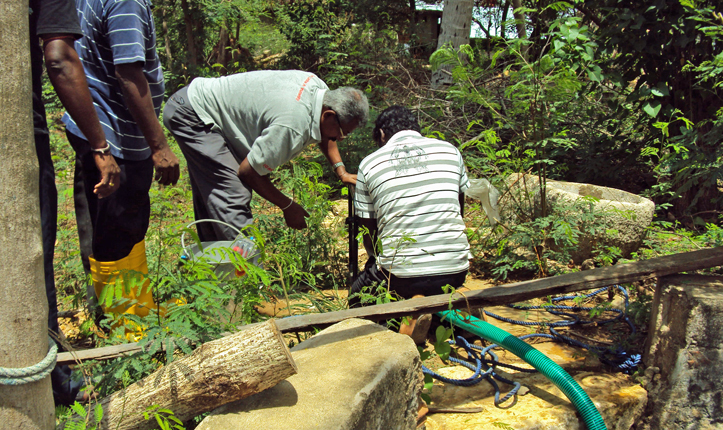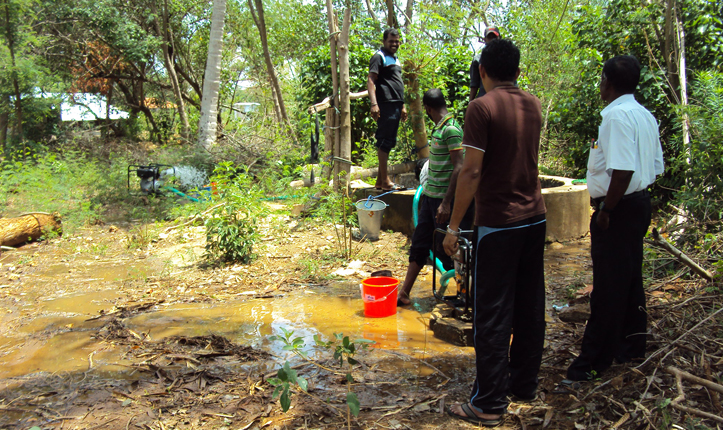Cleaning contaminated wells in northern Sri Lanka
23/08/2012 – In Sri Lanka, November- January is a rainy season (North East Monsoon) especially in the north and east part of the country. During this season most part of the north, east and central provinces used to be affected by flood and water level raises up 4 to 6 feet. During this period most of the families shift to the higher land or refugee camps.
Once the water level goes down they return to their own houses facing difficulties to get the drinking water as the flood contaminates all open wells. Most of the population uses the contaminated water, as there is no alternative. The number of water related diseases have been recorded in the hospitals during these episodes.
On the other hand the Northern and Eastern provinces population were internally displaced during the conflict. Consequently, most of the wells were not used and some of them contaminated. After the war end, families are being resettled without very basic facilities eg: drinking water. These communities are facing difficulties to get safe drinking water.
To improve the living condition of the affected community providing safe water, the SLRCS-ICRC implemented a joint project in Jaffna and to strengthening the EPR team by organizing a well cleaning campaign.
18 volunteers including 10 female volunteers from Jaffna SLRCS branch and 02 Public Health Inspectors from MoH were trained. The branch selected volunteers, covering of entire division in the district.
First day theoretical workshop was held in Jaffna SLRCS office followed by three day of practical training in the field.
Practical training took place in 3 villages (Thellipalai, Poompuhar and Navatkuli) which all are in Jaffna districts.
During this training, 11 wells were disinfected and 5 wells cleaned including 2 school wells (Navatkuli Maha Viddiyalaya, 741 students and Thellipalai Beeman Kamam viddiyalaya, 410 students). The Community was informed on the quality of water according to the testing whether it is drinkable or not. Even though the aim of the training was to train the SLRCS volunteers the training managed to benefit almost 1825 habitants of the above-mentioned villages getting the access to safe water through the training.

